Around the World in Many Days, II: Madagascar
The traditional tourist destination after Isalo is Toliara, but the main attractions of that city and its surrounding coastline are beaches and resorts, which are not as appealing to us as to many. We, instead, wanted to move to western Madagascar, specifically the city of Morondava and the parks around it
Given the limited road network of the country, there are but two ways
R S
11 chapters
16 Apr 2020
[Madagascar] Chapter XXI: In which the master of the "Kofifi" runs great risk of gaining ariary
On the road to Morondava, Madagascar, 30 Septermber to 4 October 2017
The traditional tourist destination after Isalo is Toliara, but the main attractions of that city and its surrounding coastline are beaches and resorts, which are not as appealing to us as to many. We, instead, wanted to move to western Madagascar, specifically the city of Morondava and the parks around it
Given the limited road network of the country, there are but two ways
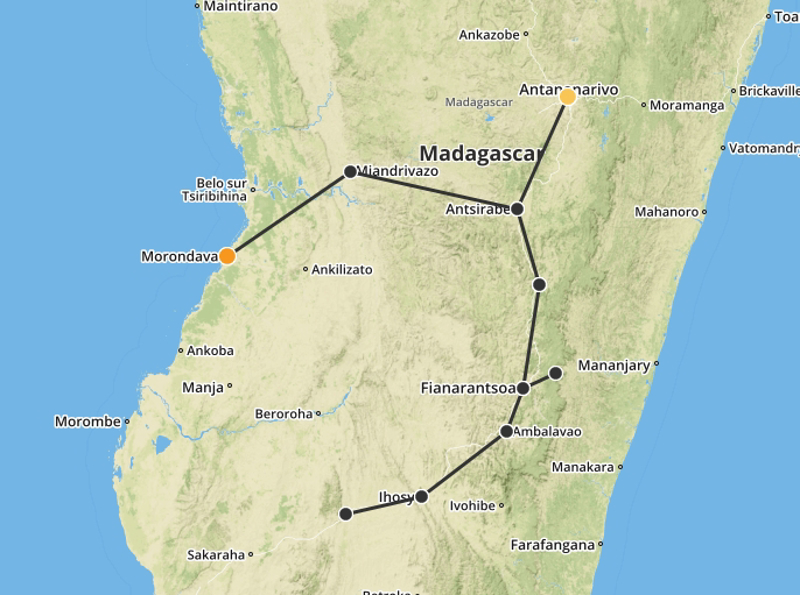
of reaching Morondava. One is to continue to Toliara after all and then head north along the western coast all the way up to Morondava. Unfortunately, this northward road is close to non-existent, which means travelling along it is either extremely punishing, via a two-to-three-day bone-shattering taxi-brousse ride, or rather expensive and still quite punishing, if hiring a private 4WD car and a driver to the tune of hundreds of dollars.
As neither seemed too attractive, we opted instead for the second way, which was to retrace our steps back into central Madagascar and from there take a westward taxi-brousse to Morondava. Unfortunately, most such rides are night rides, leaving the central highlands in the early afternoon and reaching Morondava the next morning. But we wanted to avoid these night rides altogether, as they are considered less comfortable and less safe than day rides. Still, we had heard rumours of there being some elusive day ride to Morondava, perhaps from Fianarantsoa or Ambositra or Antsirabe, we knew not. And so we set out to search for that rarest of Madagascar's wildlife --- the daytime taxi-brousse to Morondava.
On Saturday, we left Ranohira and proceeded by taxi-brousse first to Ihosy and thence to Fianarantsoa. In Fianarantsoa's central taxi-brousse station we quickly found a transportation cooperative ("Kofifi") that assured us that they indeed have a direct twelve-hour service to Morondava, leaving on Monday morning at around 7 am and reaching Morondava that same evening. Elated, we made a reservation, paid a 20% deposit, and repaired to our favourite hotel in Madagascar to rest the Sunday in preparation for our longest taxi-brousse ride yet.
Come Monday morning, we were at the station before 6:30 am, paid the rest of the fare, got our seats, and waited for the car to slowly fill up. All was going well, until N engaged the driver in conversation and found out that the ride we were booked on was not in any way a matter of twelve hours, but rather one of more than twenty hours --- in fact, this was an extra-long indirect day-and-night ride to Morondava! Now came the troublesome part --- attempting to get our money back from the "Kofifi" person who had duped us, a difficult task under the best of circumstances. Indeed it took us quite a while, but ultimately, with the help of some raised voices and a pair of reluctant policemen, we did manage to recover most of our money, deposit not included.
Disappointed but not disheartened, we decided to continue north, having heard from locals at the station that there had been sightings of the evasive daytime ride in Ambositra. Three hours later, in Ambositra, we were to learn that all rides from the town to Morondava were, alas, night rides.
Disappointed but not disheartened, we forged on to Antsirabe, reaching it on Monday afternoon in the midst of a drenching tropical rainstorm. Descending from the taxi-brousse with huge raindrops falling on our heads and our backpacks, we rushed into a dark and dirty hut marked "Sonatra" (another cooperative), where, once our eyes had adjusted to the gloom, we saw the following bold-lettered sign: "Antsirabe - Morondava, depart 08h, arrive 17h". Yes! It did exist! And we had found it!
With the sun setting and the rain pouring, and with us being rather soaked and still hotelless, we opted to book the Wednesday morning ride, thus allowing us to rest a day, see a bit of Antsirabe which we had skipped on the way south, and reserve the two front seats, which were no longer available for the Tuesday ride.
And indeed, to make a long story even longer, at 7 pm on Wednesday evening, after a hellishly hot, but otherwise not too eventful ten-hour taxi-brousse ride, we found ourselves --- at last --- in Morondava. And by "not too eventful", Malagasically speaking, I mean that an hour out of Antsirabe, smoke began coming out of the car's interior front panel, which in Madagascar is not considered a particularly good sign. But our enterprising driver managed to find an ingenious solution and get us to Morondava with only a reasonable delay, a solution that involved super-gluing some engine part several times along the way, supplemented by quickly turning the engine off and on again in mid-drive on a more or less regular basis, almost as often as changing gears. All in a day's work for a long-distance taxi-brousse driver.
One might think that travelling back along the same RN7 and through the same towns that we had seen on our way south would be an uninteresting waste of time --- one would be wrong. On the contrary, the second time around the Madagascar countryside seemed even more beautiful than before, and we, being more seasoned and more familiar with the Malagasies in general, were able to not only see the big picture, but the nuances too.
Not only seeing the long lines of parked trucks waiting to be weighed before crossing a bridge, but also noticing the two truck drivers sitting on the road, playing Fanorona, a unique Malagasy board game, the board drawn in chalk onto the tarred road itself, the pieces, pebbles. Not only seeing the old lady selling peanuts from a mostly empty basket, but also noticing the three cans that she uses as measuring units --- minuscule, tiny, and small, costing 100, 200 and 300 ariary, respectively ($0.03, $0.07, $0.10). Not only seeing the policemen stopping our taxi-brousse for a routine check, but also noticing the small folded banknote quickly exchanging hands between the driver and the gendarme, presumably ensuring a speedy and hassle-free inspection. Not only seeing the young women breastfeeding their babies in the street, but also noticing that some of these mothers are as young as thirteen or fourteen. Not only seeing the large number of people walking barefoot, but also noticing that many of them are wearing hats, sometimes quite fancy ones --- probably a sensible priority, but still a remarkable one to our western eyes.
Not only that, but we also got to take our first pousse-pousse (rickshaw) ride --- and hopefully our last, for we felt so uncomfortable for subjecting the young man to our combined weights, as well as that of our luggage (probably close to 200 kg in total), for more than two kilometres, that we ended up paying him more than three times his asking price, much to his elation.
And we also got an opportunity to feel firsthand how noticeable we were to locals, for in every one of the three taxi-brousse stations that we returned to (Ihosy, Fianarantsoa and Ambositra), we were instantly recognised by one or more people, who remembered us from a few days before and greeted us warmly upon our return.
And, finally, we also got to revisit an old friend, the bridge which had collapsed on our way south, now temporarily rebuilt and ready to be crossed by us and by others.
Accommodations:
- La Petite Bouffe, Fianarantsoa (2 night; still very nice, but on the first night some unknown distant house decided to rock the valley with horrendously loud Malagasy pop music until 3 am)
- Green Park Hotel, Antsirabe (1 night; ok)
- Hotel Hasina, Antsirabe (1 night; a bit run down)
Photo captions: (a-c) a few of the many children so very fond of waving to passing strangers; (d-h) some small scenes from Antsirabe


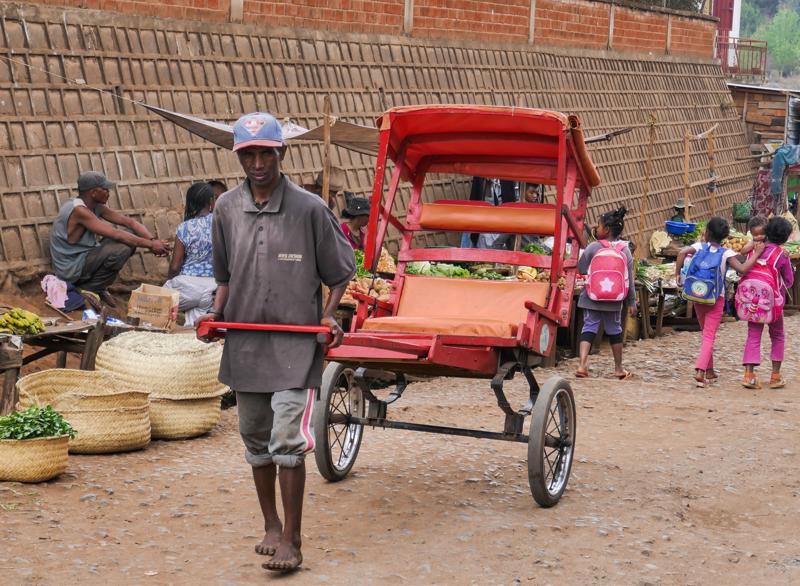
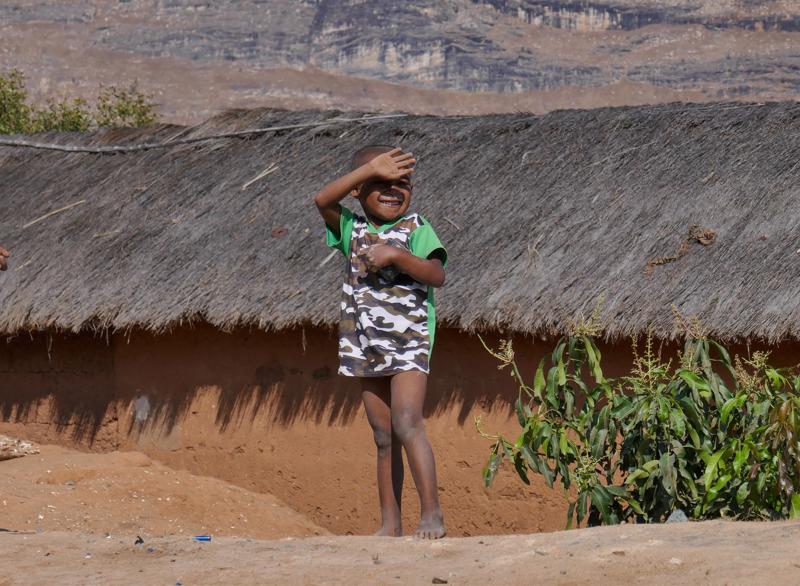
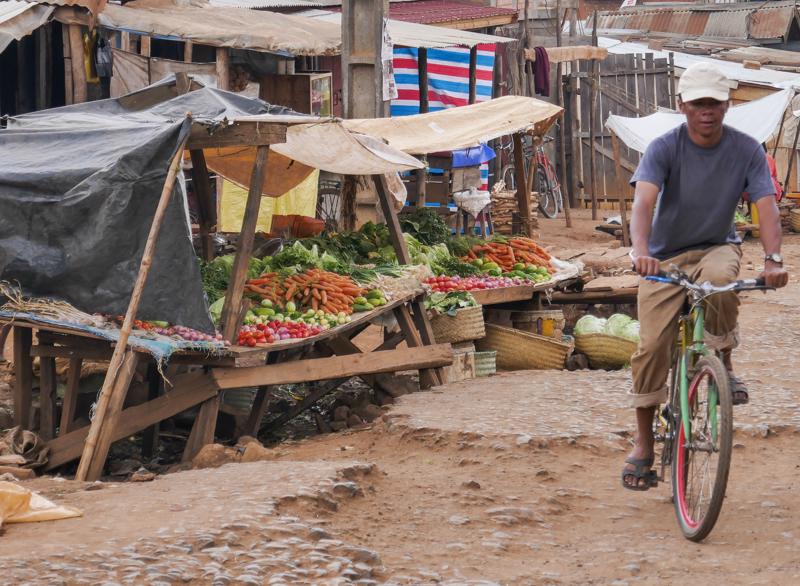


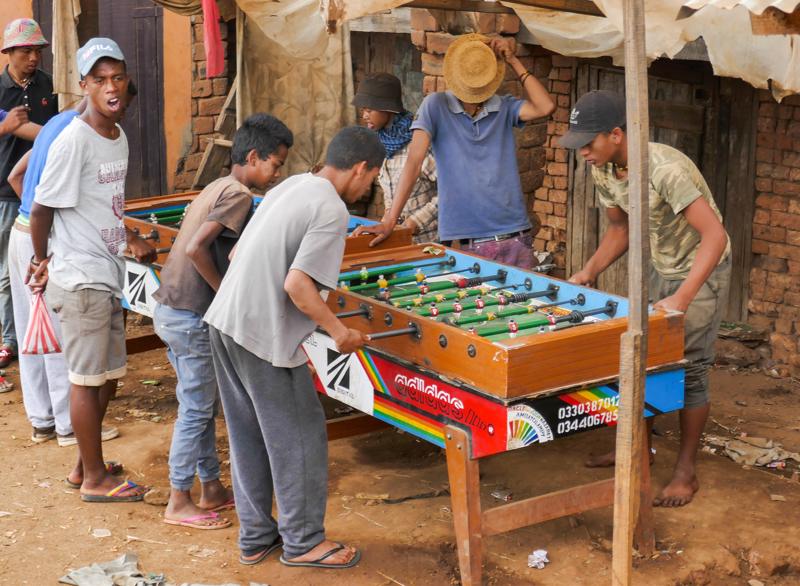
1.
[Madagascar] Chapter XIV: In which we cross the whole of South-East Africa without ever seeing it
2.
[Madagascar] Chapter XV: In which the machine of banknotes disgorges some millions of ariary
3.
[Madagascar] Chapter XVI: In which R does not seem to misunderstand in the least what is said to him
4.
[Madagascar] Chapter XVII: Showing what happened on the voyage from lemur to lemur
5.
[Madagascar] Chapter XVIII: In which a tummy, a taxi-brousse, and a city go each about its business
6.
[Madagascar] Chapter XIX: In which we take a too great interest in water, and what comes of it
7.
[Madagascar] Chapter XX: In which we come face to face with a cliff face
8.
[Madagascar] Chapter XXI: In which the master of the "Kofifi" runs great risk of gaining ariary
9.
[Madagascar] Chapter XXII: In which we find out that, even here, it is convenient to have some money
10.
[Madagascar] Chapter XXIII: In which our pause becomes outrageously long
11.
Summary of Part II and Onwards to Part III
Share your travel adventures like this!
Create your own travel blog in one step
Share with friends and family to follow your journey
Easy set up, no technical knowledge needed and unlimited storage!
© 2025 Travel Diaries. All rights reserved.